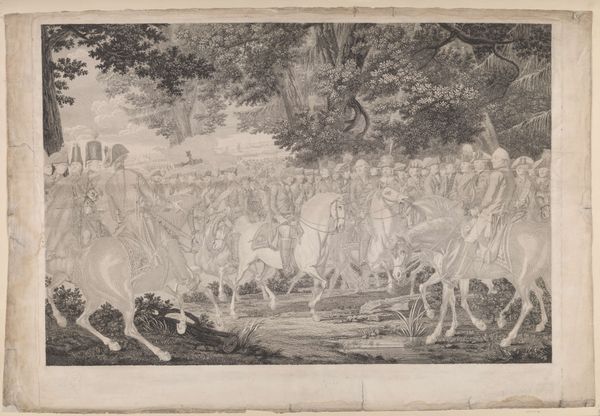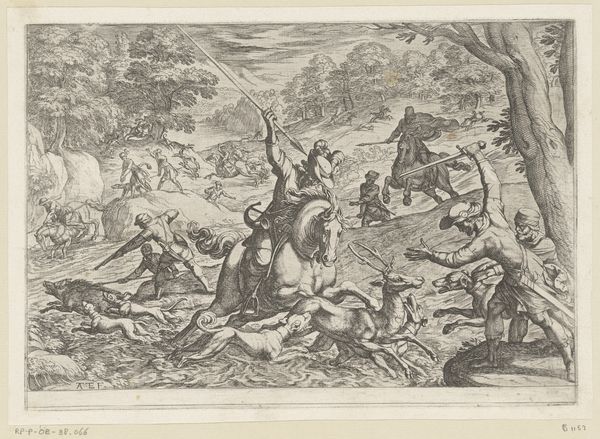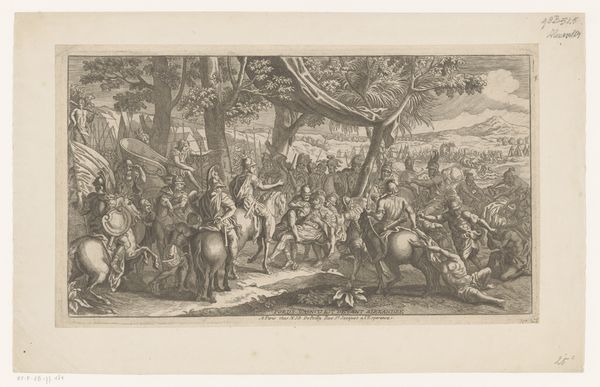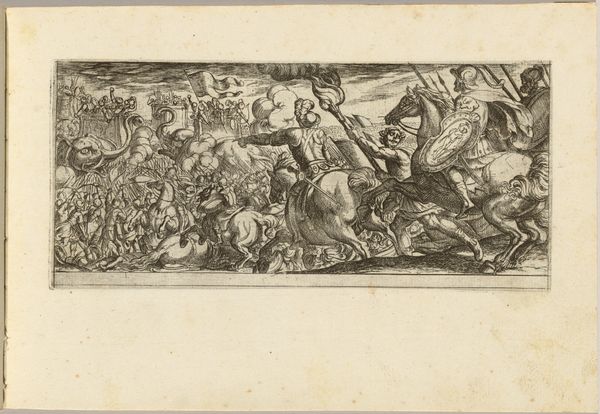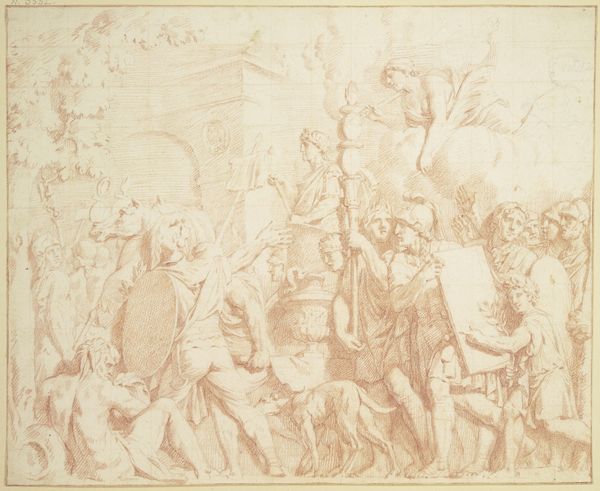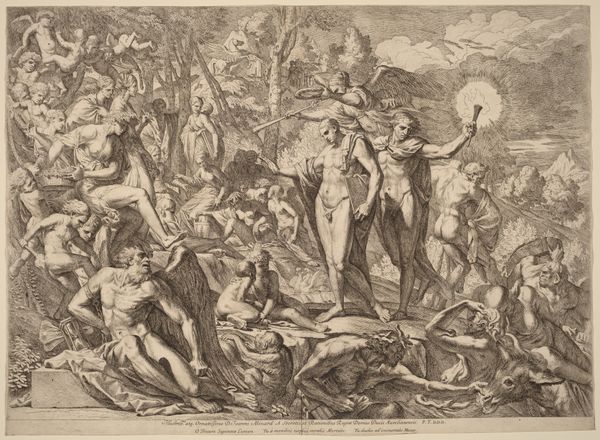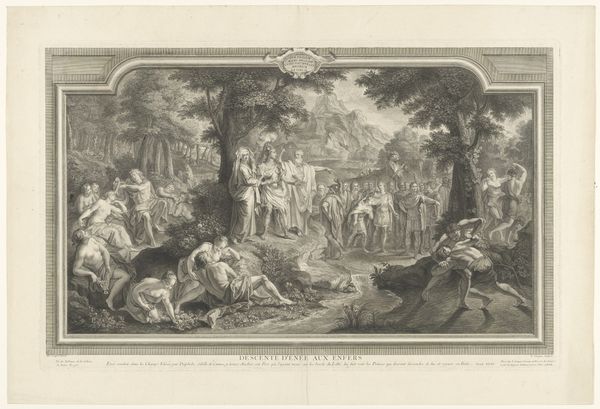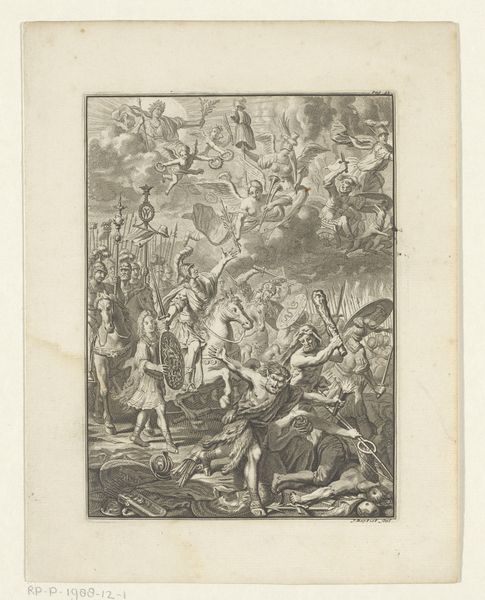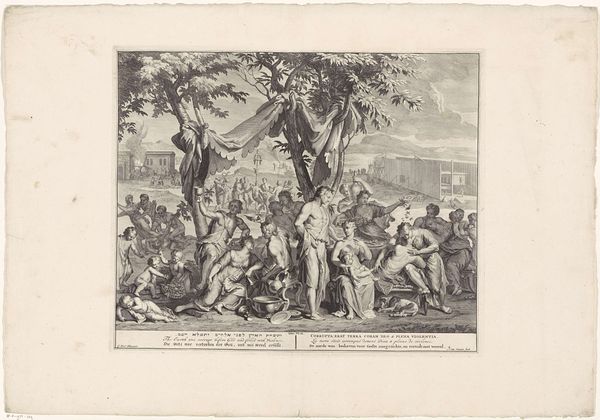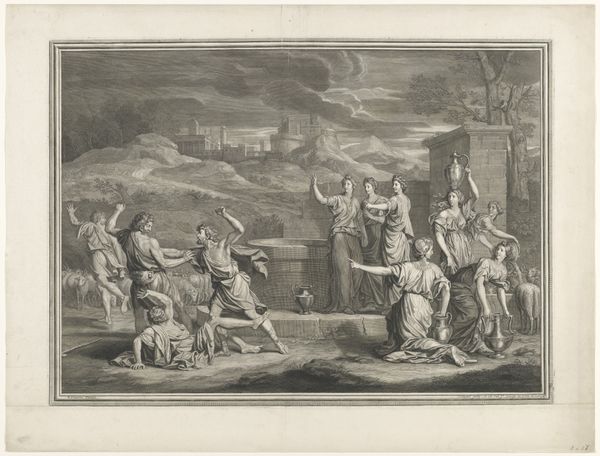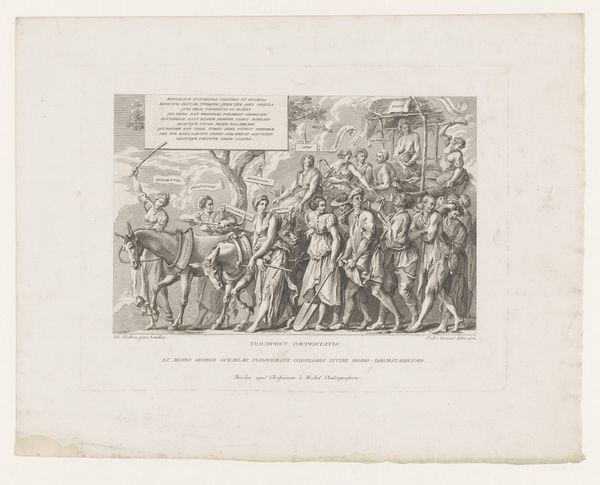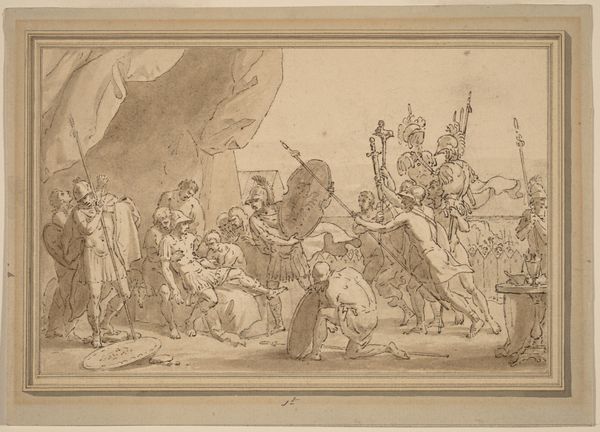
Frederik d. Store rider hjem efter en revy ved Potsdam 1788 - 1791
0:00
0:00
print, engraving
# print
#
landscape
#
group-portraits
#
romanticism
#
history-painting
#
engraving
Dimensions: 674 mm (height) x 1002 mm (width) (bladmaal)
Curator: This print by J.F. Clemens, made between 1788 and 1791, is called "Frederik d. Store rider hjem efter en revy ved Potsdam," or "Frederick the Great Rides Home after a Review near Potsdam." Editor: The landscape has an incredibly subtle rendering of light and shadow. The almost monochromatic engraving gives it an ethereal quality. There’s an undeniable grandeur to the subject, further emphasized by the large scale of the assembly and their steeds. Curator: Clemens’ work exists within a larger historical context of Prussian militarization under Frederick the Great. His military reviews weren’t simply ceremonial; they projected power and solidified control, reflecting a deep social stratification. We might ask what this piece omits about that social dynamic. Editor: True. Still, consider the masterful way he has orchestrated this composition! Observe the strategic layering of figures and the sophisticated treatment of perspective that really pulls the eye deeper into the woods. The engraving's detail produces textures in the horses' coats, the soldiers' uniforms, and even in the surrounding trees. It really lends itself to a striking level of realism. Curator: It's not just detail, though it serves a very pointed purpose here. The piece certainly romanticizes Prussian military strength, effectively disseminating royal propaganda through imagery. Its beauty lies not in aesthetic achievement alone, but also in its representation of power and control dynamics that reinforced prevailing ideologies. Editor: I suppose one cannot completely divorce form from context. Even so, you've made me look closer to the precision used in constructing the entire composition. I now notice the stark horizontals set against the subtle verticals that creates such visual interest, one I overlooked at first glance. Curator: By acknowledging those contextual influences, it enables us to recognize art's potential as both historical record and ideological artifact. Editor: A good synthesis. The more I investigate Clemens' artistry, and understand the climate informing its production, the more meaning I see here, for sure.
Comments
No comments
Be the first to comment and join the conversation on the ultimate creative platform.
